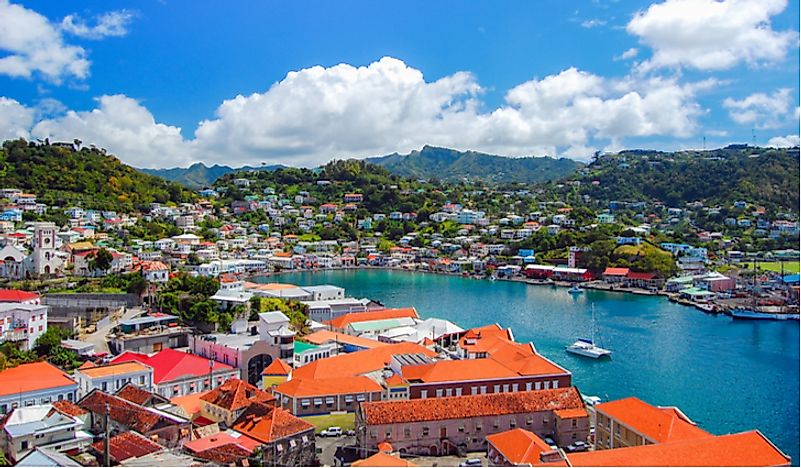Countries With The Worst Export and Income To External Debt Ratios

Export and income to external debt ratio is used to determine a country’s total amount of debt compared to the total amount of export and other income. It is a quick indicator of a country’s capability to repay short term external debt using revenue from sales to foreign countries. A higher ratio means that the country has a lower capability of financing the debt, while a low ratio means that the country can pay the debt more rapidly even in less than a year.
A country’s debt burden may increase under certain circumstances which affect the economy. This will eventually diminish the income earned from other sources. For example, natural disasters such as hurricanes, earthquakes and floods may disrupt the economic prospects of a country.
Grenada
Grenada relies heavily on tourism and the service sector as the primary source of income. In September of 2004, Hurricane Ivan swept the country resulting to loss of property. The tourism sector was adversely affected and the economy slowed down. This led to low income flow while borrowing increased. As a result, the export and income ratio escalated to unprecedented levels of up to 214%.
Jamaica
Jamaica has an export and income to external debt ratio of 198%. It has an annual per capita Gross Domestic Product (GDP) increase of only one percent on average, making it one of the slowest growing economies in the world. Together with high rate of unemployment, Jamaica has faced stagnation in development. The short term external debts far outweigh the income from sugar exports and tourism.
Sao Tome and Principe
Sao Tome and Principe has experienced a high export to external debt ratio due to fluctuation in world prices for imported commodities. The island economy is heavily dependent on cocoa as the main revenue earner but the production has substantially declined because of drought and mismanagement. Revenue from the single export has not provided enough security to repay external short term loans.
Significance of the Ratio
This ratio acts as a quick indicator of a country’s economic growth. Governments can use this report to come up with policy reforms to stimulate economic growth. It also helps in strategic planning to curb external debt. However, the ratio may not provide a clear picture of the debt burden because of omissions in calculations. For example, if a country pays less of the scheduled amount to be paid for external debt, it is not included.
Other countries with high external debt to income ratios include Bhutan, Tajikistan, Sri Lanka, El Salvador, Cape Verde, Samoa and Dominica. These ratios are vital for the World Bank to help determine fiscal policies. By taking reports from various countries, the World Bank does the math to come up with favorable interest loans, interest-free credits and grants availed to countries with the highest external debt ratios.
Countries With The Worst Export and Income To External Debt Ratios
| Rank | Country | Short Term External Debt Relative to Exports and Primary Income |
|---|---|---|
| 1 | Grenada | 214% |
| 2 | Jamaica | 198% |
| 3 | Sao Tome and Prince | 193% |
| 4 | Bhutan | 174% |
| 5 | Tajikistan | 155% |
| 6 | Sri Lanka | 153% |
| 7 | El Salvador | 152% |
| 8 | Cape Verde | 132% |
| 9 | Samoa | 131% |
| 10 | Dominica | 130% |







